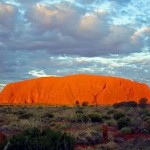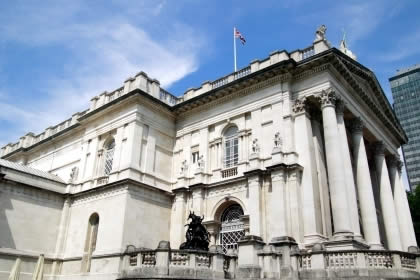Uluru or Ayers Rock; whatever you call it the great big rock in the Northern Territory’s Red Center is the heart of Australia’s Outback.
Standing an imposing 318 meters high and with a circumference of 9.4 kilometers, it’s not hard to see why so many tourists make the trek to the world’s largest monolith every year. More than simply a massive rock, Uluru is a site of great religious and cultural significance.

Uluru at sunset
Many visit Uluru with dreams of scaling to the top, but tourists shouldn’t be so hasty. The Aboriginal people who originally lived there regard Uluru as a sacred site, and encourage visitors to respect this by refraining to climb. If that doesn’t convince you, there are some practical considerations to think about. Scaling Uluru is the equivalent of climbing a 95-storey building. The path is long, and in many places treacherous. More than 35 people have died during the two-hour journey, so unless you are very fit I wouldn’t even consider it. It’s also worth noting that many people are disappointed once they reach the top. After all, you’re standing on the only attraction in an otherwise deserted area.
Many people say Uluru is best visited at sunrise or sunset. This is when the colors of the rock rapidly change in a sort of natural light show. It’s a beautiful spectacle, but if you’re hoping for a quiet moment to enjoy it you may be disappointed. Large numbers of tourists turn out to view Uluru at these times so it can become very crowded, especially during school vacation times.
The only accommodation on site is the Ayers Rock Resort. Staying in the resort is very pricey, but its campground has fair prices.
A less expensive alternative for travelers with a car is Curtin Springs Wayside Inn, located 85 kilometers away. Unpowered camping sites are free, although showers cost extra due to water shortages.
Three-day passes to Uluru-Kata Tjuta National Park cost $25. It may disappoint busy travelers that cheaper single-day passes are not available, but there is always the option to stay longer to make the most of the money. After all, the world moves slowly in the Northern Territory so it makes sense for travelers to do the same.
